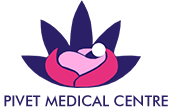After fertilisation has taken place the embryos will be ready for the next stage of development called cleavage (when the cells of the embryos start dividing). The environment the embryos need is of the utmost importance when it comes to completing the culture stage successfully, and is monitored carefully by our team of embryologists.
The culture media used to grow the embryos in specifically designed ‘mini’ incubators is made up of essential amino acids and other components necessary for good embryo development. As well as the culture media, temperature plays a vital part. Embryos need to be cultured at a specific temperature to ensure survival, therefore the inside of the embryonic incubators is maintained at 37ºC. This is the same temperature that is found inside the fallopian tubes, where a developing embryo would be growing after a natural conception.
In the IVF process embryos will have cleaved to approximately 6-8 cells by the third day after egg collection. They can be transferred into the uterus or frozen for future use at this stage.
The PIVET embryologists may suggest you grow your embryos to a more advanced stage before embryo transfer, referred to as the blastocyst stage, which occurs 2-3 days later or on Day 5 of development. A multi-step (sequential) culture media system is used which makes it possible to respond to the changing metabolic needs of the rapidly growing and changing embryo for an extended culture period.
It is known that about 60% of embryos will not grow to this stage, mainly due to embryo having chromosomal problems. However, the blastocysts that reach this stage show that they are more developmentally competent than earlier stage embryos, and hence give rise to a higher chance of a pregnancy.
Why would a blastocyst-stage embryo transfer be suggested?
Traditional embryo culture methods have necessitated the transfer of two or more embryos to the uterus in order to obtain higher pregnancy rates. However, growing the embryos to the blastocyst stage allows for better selection of the embryos that are able, in culture, to grow to blastocyst and are more likely to implant. In this way we can better select the embryos which have the greatest potential to give rise to a pregancy, and thereby reducing the number of embryos we transfer to a single blastocyst. This maintains a good chance of a pregnancy but reduces the risk of a multiple pregnancy.
There is however a significant attrition rate from day 3 (when the embryos are usually between 6 and 8 cells) until day 5 (when the embryo often reaches a blastocyst stage of approximately 100 cells). In order to consider culturing the embryos to the blastocyst stage, it is advised to have at least 4 fertilised eggs. Extended culture may also be suggested if previous earlier stage (Day 3) embryo transfers have not resulted in favorable outcomes, to determine if your embryos are capable of developing to blastocyst.
If you have less than 4 fertilised oocytes, a Day 3 embryo transfer will be advised. However if you have had previous successful blastocyst growth, Day 5 embryo transfer will still be possible if you are happy to proceed.
What are the disadvantages of blastocyst culture?
The decision to grow your embryos to the blastocyst stage will be a carefully considered one and will be fully discussed with you. Whilst it is possible to make a prediction as to the likelihood of embryos growing to blastocysts (based on the development and embryo quality seen on Day 3), there is no guarantee as to how they will continue to grow. Occasionally it may be necessary to transfer a slow developing embryo, or cancel the embryo transfer altogether.

